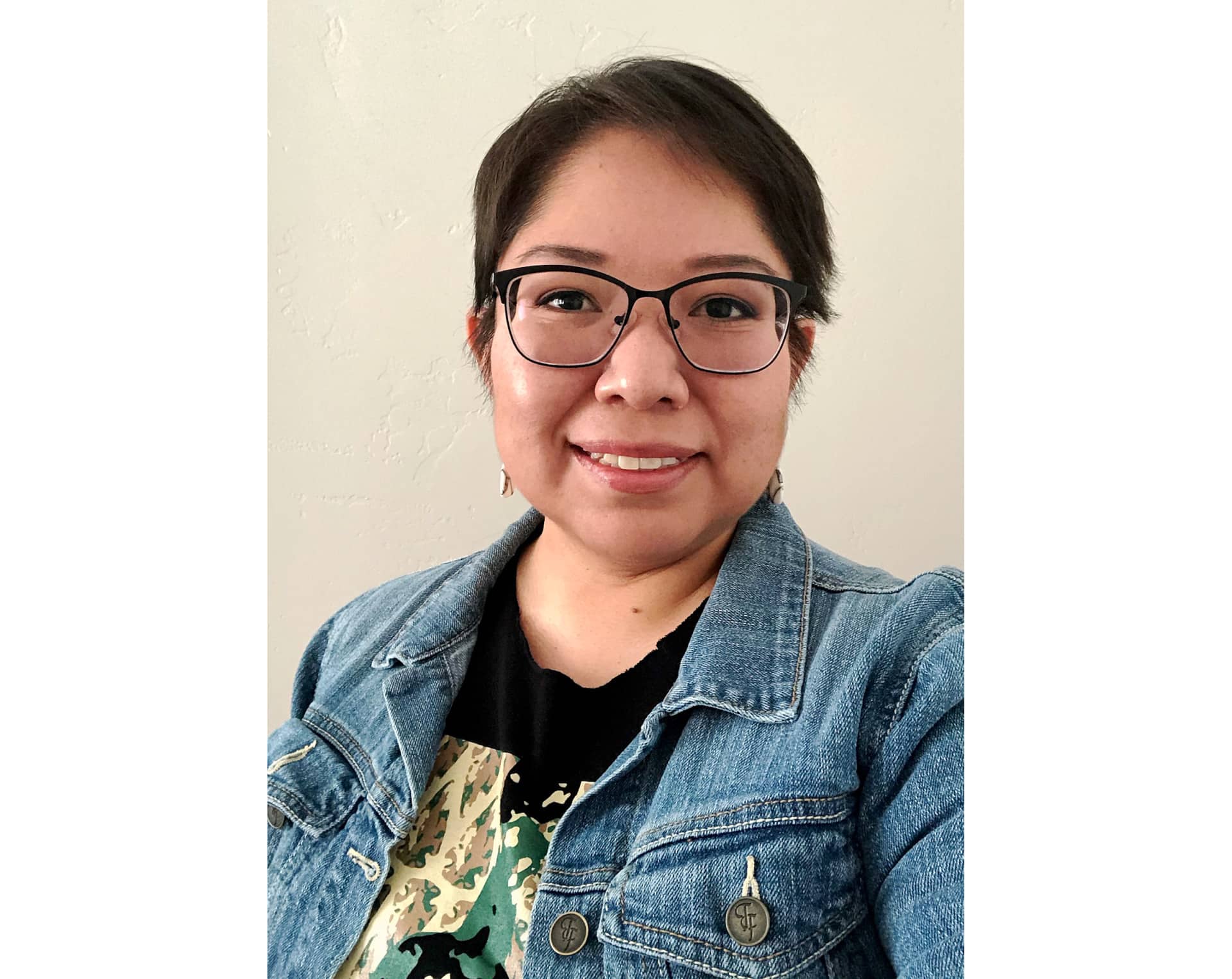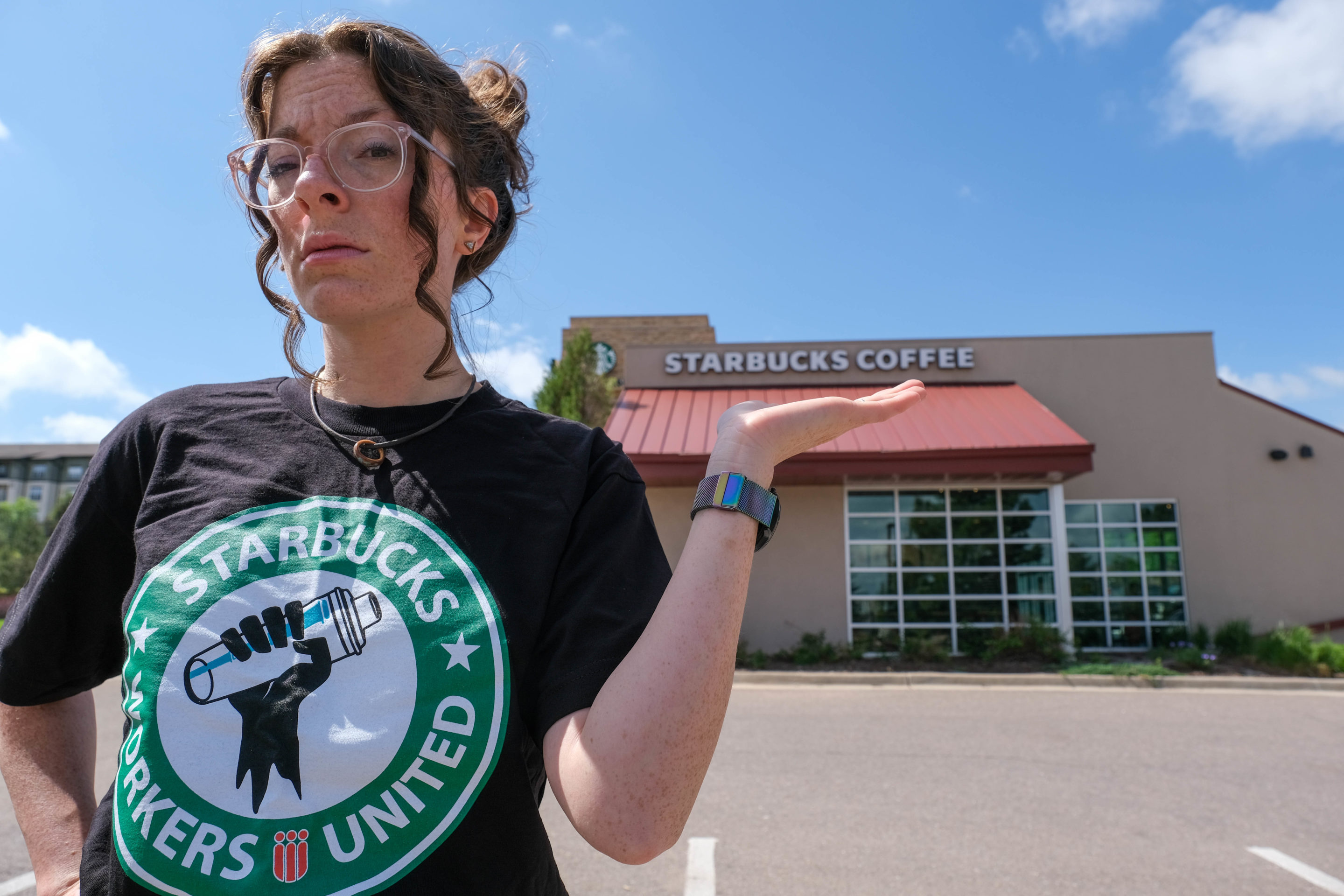//Kelsey Lansing, a member of the Navajo Tribe and staff at Durango’s Sexual Assault Services Organization, co-led Durango’s first Rally & Round Dance for Missing and Murdered Indigenous Relatives event on May 8. Photo provided by Lansing.
After weeks of planning, Kelsey Lansing’s vision came to fruition on May 8 at Durango’s first-ever Rally & Round Dance for Missing and Murdered Indigenous Relatives event. As attendees came together in prayer at Buckley Park, red dresses fluttered in the trees accompanied by signs highlighting the prevalence of violence in and around Indigenous communities.
One sign pointed out that 86% of reported sexual assaults against Native American women are carried out by non-Indigenous people. Another said that in 2016, 5,712 missing Indigenous women and girls were reported but only 116 were logged into the Department of Justice’s database.
“We are more than red dresses and shirts hanging in the trees, we are more than red or black handprints of faces, and we are more than statistics and data,” Lansing, a member of the Navajo Tribe and co-organizer of the event said. “We are resilient, strong, and most importantly, we are still here.”
The prayers were followed by a solidarity walk down Main Street, leading to a day filled with traditional Native American round dance songs, contests, games and Indigenous food such as mutton and goat stews.
“It was an amazing experience and we look forward to hosting another next year,” Lansing said. “I am lucky to work for an organization that believes in the passion I have for addressing and raising awareness of violence against Indigenous people.”
Lansing is a staff member with Durango’s Sexual Assault Services Organization, or SASO, which oversaw a self-care tent for anyone experiencing trauma in relation to sexual assault, domestic or intimate partner violence, and suicidal ideation. Their dedication to raising awareness for missing and murdered Indigenous women, or MMIW, largely started when Lansing joined the team.
A 2016 report from the National Institute of Justice Research revealed what many already know to be true. Native American women are 1.2 times more likely to experience violence in their lifetime than their non-Hispanic, white-only counterparts. Native women are also 2.5 times more likely to experience sexual assault than all other races. The violence against Indigenous women has reached epidemic proportions, with an estimated 34% experiencing rape in their lifetimes and 39% surviving domestic violence.
Lansing, who was recently recognized by the National Sexual Violence Resource Center as the 2020 Colorado winner of its Visionary Voice Award, understands all too well the violence and abuse of Native women.
“This work is important to me because growing up, I saw what our Indigenous women were going through,” Lansing said. “I lived in Cortez, Colorado and I saw a lot of racism, discrimination, negative stereotypes, and violence. As a family, we often heard of incidences surrounding incest, sexual assault, people going missing or being murdered in our area. It took me some time to realize that I wanted to help those who are experiencing violence.”
In 2012, Lansing began attending Fort Lewis College where she ultimately graduated with a Bachelor’s Degree in Psychology and Native American & Indigenous studies with a focused interest in socio-anthropology. During her time at FLC, there was minimal awareness and data collection on missing and murdered Indigenous women.
“Missing and murdered Indigenous women and relatives is a major problem that many people ignore,” Lansing said. “We often hear, ‘That doesn’t happen around here,’ but the truth is, it happens everywhere. Colorado is no exception.”
Driven by her desire to help Indigenous communities, she started research on violence against Native women and human trafficking. The majority of her research came from US Northern Tribes and their accounts of domestic violence and human trafficking.
An average of40% of women involved in sex trafficking identified as American Indians, Alaska Natives or First Nations according to a study conducted at four sites: Hennepin County, Minnesota, Anchorage, Alaska, Winnipeg, Manitoba, and Vancouver, British Columbia. Yet, Native women represent 10% or less of the general population in the studied communities.
Lansing first joined SASO as a hotline and prevention education volunteer in 2015, before becoming a full-time Cultural Outreach Coordinator. While SASO is dedicated to providing advocacy to all victims of sexual assault, the organization has supported Lansing’s passion for addressing MMIW specifically in its work.
As Lansing mentioned, MMIW is as much of a Colorado issue as it is in any other state. Prior to the colonization of Colorado, the Apache, the Arapaho, the Cheyenne nation, the Pueblo tribes, the Shoshone tribe and the Ute nation lived on the land. As white pioneers settled, violence against Native Americans spread. One of the most notorious instances was the Sand Creek Massacre of 1864 in which federal troops killed over 500 Southern Cheyenne and Arapaho women and children. The survivors of the Sand Creek Massacre were sent to a reservation in Oklahoma where many still live today.
The murder and trafficking of Native people is weaved into Colorado’s identity even today. According to a report from the Urban Indian Health Institute, Denver was listed at number seven in the top 10 cities with the highest number of missing or murdered indigenous women and girls not recorded by police. The report also listed 12 cases that were found in police records: one missing, eight murdered and three unknown.
As Indigenous communities continue to fight to be heard and have violence against Native women taken seriously, the appointment of Interior Secretary Deb Haaland, the first Indigenous person ever appointed to a presidential cabinet, has brought MMIW into the spotlight. Upon being appointed as Secretary of the Interior, Secretary Haaland announced the formation of a new Missing & Murdered Unit within the Bureau of Indian Affairs Office of Justice Services.
The unit will provide leadership and direction for cross-departmental and interagency work involving missing and murdered Indigenous people and Alaska Natives. The unit will help put the full weight of the federal government into investigating these cases.
“Violence against Indigenous peoples is a crisis that has been underfunded for decades. Far too often, cases in Indian country go unsolved and unaddressed,” Secretary Haaland said in the press release announcing the new agency. “The new MMU unit will provide the resources and leadership to prioritize these cases and coordinate resources to hold people accountable, keep our communities safe and provide closure for families.”
With a newly designated unit, funding and an administration that is not only vocalizing their support for Indigenous women but has put a Native American woman in charge of overseeing the effort, Lansing feels a glimmer of hope.
“I cannot speak on behalf of the Native American community, but personally, I feel like the appointment of Secretary Haaland gives many Native people a voice,” Lansing said. “By seeing her in a position of power like this, young Indigenous men and women will see that they can do it too. We can be the change we wish to see.”
Enjoyed this story? Help us keep the lights on! Supporting local press ensures the stories you want to read keep coming, become a member for free today! Click here.





0 Comments